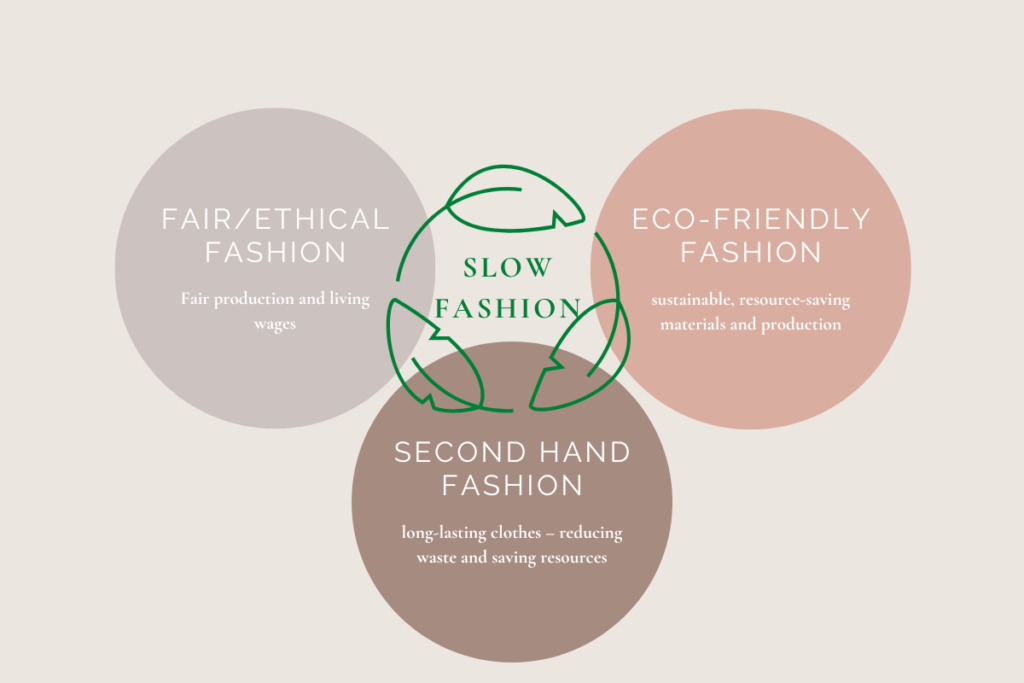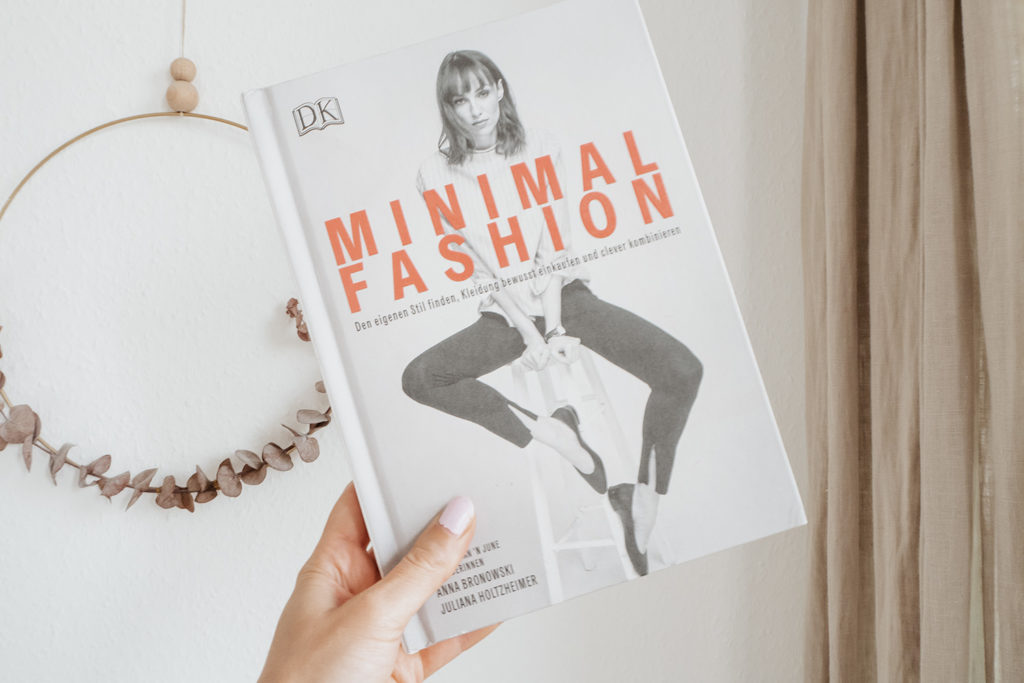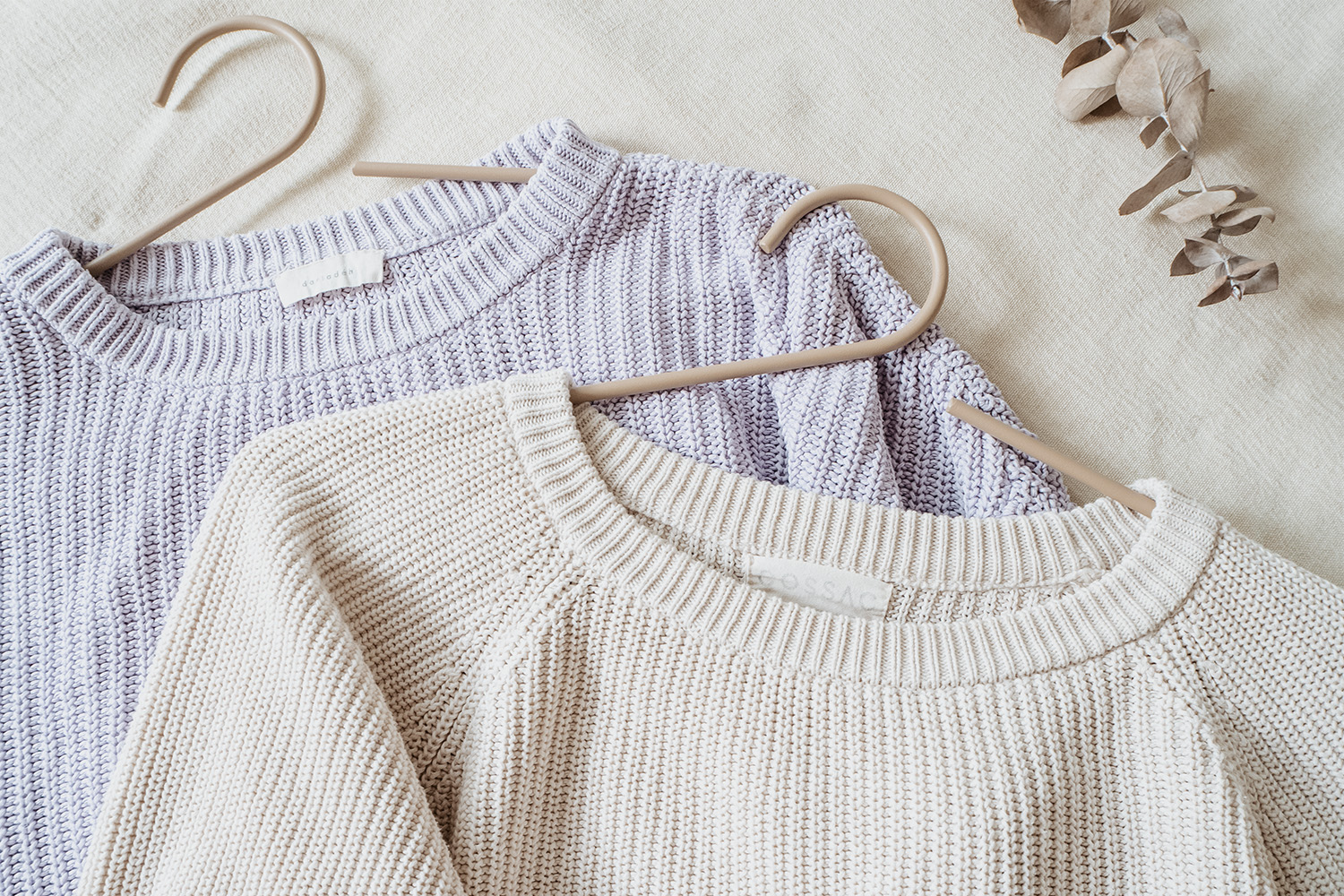Once we’re trying to break up with fast fashion, we’re in desperate need for some great alternatives. You’ve probably already come across some popular buzzwords such as sustainable, ethical, green, minimal or slow fashion. While all these terms are basically describing fast fashion alternatives, they aren’t synonyms. In fact they rather characterize related yet distinct concepts. So you’re looking for a more mindful approach to fashion? Then let’s hit the brakes and have a closer look at the slow fashion movement. What is slow fashion and how do you start?
Fast Fashion vs. Slow Fashion
The conventional fashion industry offers clothes at (ultra) low prices, selling them in enormously high quantities. This mass production of low quality garments meets fast changing trends and the countless need for new collections. The consequences for our environment as well as the garment workers – mostly women – are devastating to say the least.
While fast and ultra fast fashion brands drive unhealthy consumerism, by turning garments into disposables, slow fashion acts as a countermovement and ultimately restores the value of our fashion. It focuses on a mindful, long-lasting and therefore ethical as well as ecological approach to fashion.
Consuming slowly and consciously, wearing clothes longer, buying second hand, repairing instead of throwing out – key is to extend the life cycle of our garments. High quality, sustainable materials, timeless designs and fair manufacturing processes are way better for nature and humans.
Slow fashion literally means slowing down the fashion industry.

Reasons to Love Slow Fashion
Slow fashion is the answer to face the problems and consequences the fast fashion industry creates. So honestly, there are no real disadvantages. But I want to point out some of the main reasons I do love slow fashion so much:
- by extending the lifetime of garments – by taking care of them, repairing them, wearing them longer and buying second hand instead of new – we’re saving resources and the environment
- slow fashion reduces our carbon footprint
- if we consume consciously and completely avoid fast fashion, we support and push a necessary fashion revolution
- we support brands with ethical and ecological values
- we foster fair production processes and living wages
- conscious consumerism often goes along with saving money
How Do You Know if a Fashion Brand Is Sustainable?
If you want to check if a brand is actually sustainable there are different things to consider. Many brands spend more time on advertising and marketing their products as sustainable rather than actually making an effort to do better. So greenwashing definitely is an issue in the fashion industry, which makes it harder to find out if a brand truly is sustainable.
Third-party labels and certifications can lead you in the right direction, but you still have to check if these are valid. There are so many different certifications out there, not all of them actually mean something. Especially since there are no universal standards that define sustainability. You can find some guidance and direction on Project Cece. Also keep in mind, that certifications cost money. So especially small labels that just started out might not be able to afford these, while in fact their production and products meet ethical and environmental standards.
My advice is to look at the facts. Conscious collections and green marketing simply aren’t enough. How and where are the garments produced? Do the workers involved earn living wages and do they work under safe conditions? Check the materials and see what your clothes are made from. Sustainability reports and transparent marketing and communication often hold the answers you’re looking for.
Favorite Slow Fashion Brands
Slow fashion is getting more and more attention and the sustainable fashion market grows. There are many smaller and bigger brands out there, trying to change the fashion industry. Many of them only drop one or two collections per year, produce garments on demand or use natural resources and deadstock while also paying their workers living wages.
Here are some of my favorites:
Dariadéh (Austria) – Timeless basics and feminine designs
Essentials for Zula (Swiss) – Swimwear, underwear and beautiful basics
COSSAC (UK) – Timeless, elegant and feminine styles for day-to-day life and special occasions
The Sept Label (Germany) – Feminine basic styles in all those beautiful neutrals
Christy Dawn (USA) – Dresses, blouses, sweaters and jumpsuits in beautiful boho and flower prints
Sister the Brand (Germany/Cyprus) – Handmade jewelry and unique accessories
How to avoid fast fashion and build a sustainable wardrobe
If you’re reading this article I’m pretty sure you love fashion. For most of us it needs to be practical, trendy, accessible and on top of that, not too expensive. I totally get it and definitely felt the same. But once we truly understand how destructive the fast fashion industry is, there’s no other way than to slow down. Once we truly quit, there’s no turning back. And honestly, there doesn’t have to be.

I do admit – transitioning to slow fashion isn’t easy. After all, for most of us the way we consume fashion is a habit, a given routine. And I guess we all know how hard it is to tackle these, right?
If you see and accept this transition as a process though it really isn’t that hard anymore. You don’t have to throw out all your fast fashion pieces or quit shopping all together. A great start to your slow fashion journey is to raise your awareness to a more mindful approach to fashion and its consumption. After that, all other steps will naturally fall into place.
A few tipps on how to start:
- Get educated and inspired: Gather information and inspiration on fair fashion – great resources are Fashion Revolution, Clean Clothes Campaign or Good on You.
- Do a closet inventory (less is more here): Donate, give away, sell or upcycle clothes you don’t need anymore and make a list of things you actually do need to buy. Maybe you can even create new looks with clothes you’ve already forgotten about.
- buy second hand instead of new – check local flea markets, second hand stores or online market places
- If you buy new, choose ethical and sustainable brands
- Quality over quantity
- try to avoid microplastics or synthetic fabrics. Try to invest in clothes made from natural fabrics instead. These are good for the environment and your skin.

- Invest in timeless pieces that are easy to combine – better buy those it-pieces second hand (if you really need them)
- There’s a special event coming up? Instead of buying a new outfit you’ll most likely only wear once, rent it. You can either pick something out of your best friend’s closet or check out one of these platforms online: Unown (Germany), Rent the Runway (USA) or nuuly (USA).
- Don’t just throw away old and unwanted clothes. Depending on the condition you can donate, sell or upcycle those garments.
- Take good care of your clothes: Don’t wash them too often, use mild detergent and steam rather than iron
- repair your clothes: that’s sustainable and saves you money
- adjust your clothes – use a good tailor or do it yourself: Especially buying second hand gets a lot easier if we’re willing to invest a little extra time or money in adjusting the clothes to our bodies.
Transitioning into Slow Fashion Is a Process
Fast fashion is basically everywhere. So truly avoiding it can be quite the challenge, at least in the beginning. At the same time alternatives are growing. With rising popularity sustainable fashion is more accessible and consuming fashion mindfully and consciously becomes a lot easier. Slow fashion is complex and way more than just a simple trend. Joining this movement step-by-step is a great start and an important contribution to sustainability as well as social and ecological justice.


Pingback: Slow fashion: how to make your clothes last longer